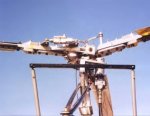OuterMarker
Aspirant
- Joined
- Dec 6, 2007
- Messages
- 568
- Location
- Batavia, Illinois
- Aircraft
- Air Command
- Total Flight Time
- 94-rotor
In reading about the beginnings of rotor flight, gyros began for the most part with four blades. At some point 4 blades were reduced to 3 blades. Still later, 3 blades became 2 blades. I would like to understand why. Today, with smaller single a two place gyro's, why are there not 3-bladed gyro's? Reader Digest version wanted here and if you have web sites or books to suggest, I would love to have those leads also.
thanks!
albert
thanks!
albert



